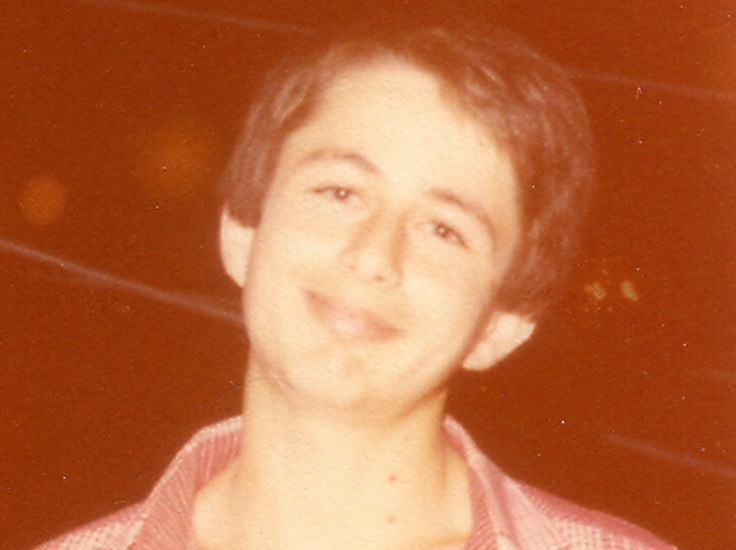Iran murdered my brother in a 1988 massacre. Our father is still searching for his grave
The West's indifference to Iran's historic crimes lets my brother's killers get away with murder.

On a cold day in March 1988, my colleague came to me and said "Masoumeh, Masoumeh, you have a letter".
Receiving a letter is a routine for most people, but not for me. I was a former political prisoner in Iran and had been sentenced to 20 years' imprisonment in the city of Rasht in northern Iran. I was able to escape the prison miraculously and cross Iran's borders in a completely non-standard fashion. In the midst of a severe crackdown on dissent in Iran, it was very risky to send me a letter.
I opened the envelope with curiosity. I was shocked after reading a few lines. It was a letter from my younger brother, Ahmad. "Ahmad? Can this be true?"
For years I was waiting for such a day. Ahmad was arrested when the regime's Revolutionary Guards raided our home in 1982, when he was 16-years-old. His crime was participating in meetings held by the People's Mojahedin Organization of Iran (PMOI/MEK), the regime's main opposition. After suffering long torture he was sentenced to five years in prison. He was first held in Rasht Prison and was subsequently transferred to the notorious jails of Evin and Gohardasht.
He remained in prison for months after his sentence came to an end. His former cellmates had told me stories about his resistance and high spirits.
He was released in February of 1988. He quickly sought to leave the country and join the opposition. Now his letter was in my hands. He had written: "If I wanted to write to you about what I went through all these years, it would equal many, many books. So, let's put this off for a later time..."
Months passed and I waited to see Ahmad. But why wasn't there any news of him? Why didn't he call? My heart was full of anxiety. There was a nagging feeling inside telling me something had happened.
In late July 1988, former Iranian regime Supreme Leader Ruhollah Khomeini issued a fatwa for the execution of political prisoners. Despite all-out censorship and isolation of all the prisons, news about this got out of Iran. Hundreds of executions were taking place each day. There were non-stop hangings. Each news report was like a severe blow to my head. I called my father and asked about Ahmad's whereabouts. He asked in surprise: "Isn't he with you? He said goodbye to all of us to go and see you! If he's not with you, then...?"
I still remember the long silence during that phone call. If he was not with me, then...?!
My father had assumed correctly. He started looking for Ahmad from one prison to another. But the more he searched, the less he found. Neither a name, nor a sign, nor a grave.
In 1991 we came to understand that my little brother, Ahmad Raoof Bashardoost, was amongst the 30,000 victims of the mullahs' madness in the summer of 1988. Nearly all the victims, including my brother, were PMOI/MEK supporters.
This painful story remains alive for my family and all of Iranian society. Twenty-nine years later the authorities have never given my brother's body to my family, and we don't even know where he was buried. My father has been searching for his grave for 29 years.
But I have hope.

Since last year, a campaign in Iran named the "Justice Movement" has been spreading the message of the victims. It began when the audio file of a meeting on 15 August 1988 between Hossein Ali Montazeri, then deputy to Khomeini, and members of the "Death Committee" shed new light upon the massacre.
This was made public after 28 years and came as a shock to Iranian society. Members of the Death Commission were appointed directly by Khomeini and sent political prisoners like my brother to the gallows after one-minute court sessions.
In the audio recording, Ayatollah Montazeri told the Death Committee members: "The gravest crime in the Islamic Republic, for which history will condemn us, was carried out by you. Your names will go down in history as criminals."
Montazeri was sacked and passed away in 2009 while under house arrest.
Members of the Death Committee have never been punished and continue to serve in key posts. On 8 August Iranian President Hassan Rouhani, who some in the West continue to claim is a "moderate", appointed Alireza Avaie, another perpetrator of the 1988 massacre in Khuzestan Province, as justice minister.
Rouhani's former justice minister, Mostafa Pourmohammadi, was a member of Tehran's Death Committee. He has now been appointed as an advisor to the regime's judiciary chief.
It may be strange, but people who were either in early childhood or not yet born at the time of the 1988 massacre are seeking every opportunity to be involved in the Justice Movement. This has become a dead-end for the mullahs' regime and all its factions. Amnesty International issued a 94-page report on 2 August over the crackdown on human rights advocates in Iran emphasising how the younger generation is seeking the truth.
As underscored by Mrs Maryam Rajavi, president of the National Council of Resistance of Iran, the West's indifference has only emboldened the mullahs to continue their crackdown and killings. An international fact-finding mission into the 1988 massacre should have been established long ago. This is the minimum expectation of my father, who continues his effort to find his son's grave.
Does the international community prefer to continue going easy on Iran? I hope it has learned something from the past three decades.
Massoumeh Raouf, a former political prisoner in Iran, is a member of the National Council of Resistance of Iran. She lives in exile in Europe.
© Copyright IBTimes 2025. All rights reserved.






















